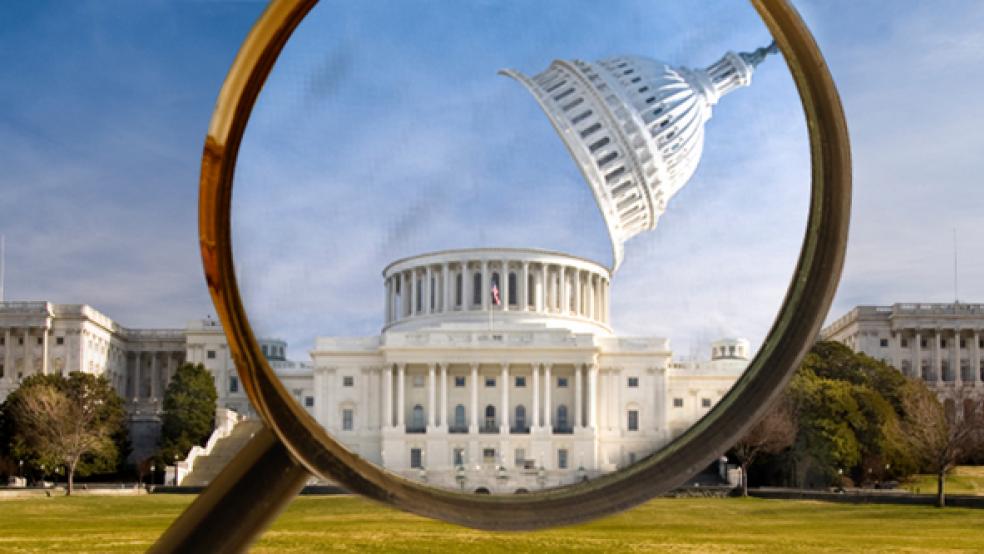An annual rite of summer, Congress takes a recess for five weeks every August. Some members spend the time in their home districts, reconnecting with constituents and raising funds. Others travel throughout the country or overseas to learn more first-hand about the policy issues they most care about, returning to Capitol Hill armed with fresh knowledge and new perspective.
“In a general, travel can be an important part of fulfilling their oversight role,” said Joshua Sewell, a senior policy analyst for Taxpayers for Common Sense.
Related: A Revolutionary Budget Proposal for Congress: Do Your Work on Time!
Even foreign trips can educate members about how an initiative is “actually working on the ground. The danger comes in when the trips start to move away from being about business and more about pleasure,” he said, recalling a 2012 trek to Israel where Rep. Kevin Yoder (R-KS) went skinny-dipping.
Calculations by congressional tracking website LegiStorm show that more than $5 million was spent on trips in 2014, down by more than $1 million from the previous year. A partial analysis of 2015 states that more than $3 million has been doled out on travel.
That amount might sound like a lot in penny-pinching Washington but “spending a few dollars to check on how you’re spending a few billion? It’s worth it,” according to former Sen. Saxby Chambliss (R-GA), who traveled to Iraq, Afghanistan, Yemen and parts of Africa over the course of his 20-year congressional career.
Related: U.S. Could Lose Out on 1.4 Million Jobs if Congress Refuses to Make a Budget Deal
Trips aboard are most often conducted via an official, taxpayer-funded congressional delegation (CODEL). The travel is usually approved by the House Speaker or the relevant committee chair and then worked out with federal agencies like the State, Defense and Treasury departments.
House Minority Leader Nancy Pelosi (CA) led the most high-profile CODEL of the 2015 recess thus far, taking a contingent of her fellow Democrats on a trip through Italy, where members received briefings from military officials in Naples and visited Milan Expo 2015. They next stopped in Ukraine to meet with government leaders and discuss the fragile security situation in that country.
Before leaving for the recess, Senate Armed Services Committee chair John McCain (R-AZ) said he and Sen. Sheldon Whitehouse (D-RI) would lead a trip to facilities in Sweden and Norway.
While Whitehouse will likely use the sojourn to focus on his pet issue of global warming, McCain hopes the trip will add to an ongoing Armed Services debate about the future of U.S. military strategy in the Arctic.
Related: Cornyn Says Budget Deal Inevitable to Avert a Government Shutdown
More trips are likely to be announced before lawmakers reconvene in September, though many, especially those centered around national security, will only be learned about after the have concluded.
Iraq, Afghanistan, Pakistan and the U.S. prison in Guantanamo Bay, Cuba, are frequent stops for lawmakers but the visits are only publicized afterward out of security concerns.
In addition to an old-fashioned CODEL there are privately-sponsored trips, which are paid for by foreign governments and trade groups.
Last week 58 House members — 22 Democrats and 36 Republicans — made a biennial trip to Israel. The trip was paid for by the American Israel Education Foundation, the charitable arm of the American Israel Public Affairs Committee (AIPAC), and took place roughly a month before Congress is set to consider the controversial Iran nuclear deal.
House Minority Whip Steny Hoyer (D-MD) chaperoned the Democratic contingent to the country and House Majority Leader Kevin McCarthy (R-CA) led the Republican delegation.
The duo put out a joint statement saying they toured a battery of the Iron Dome missile defense system, which the U.S. helped create.
“As we visited the towns of Ashkelon and Sderot near Gaza, we saw firsthand that without the Iron Dome, many more people would have lost their lives. Congress stands united with Israel, not only in support of its Iron Dome defenses, but also in preserving Israel’s security and ensuring the safety of its people,” they said.
Legistorm said when the trip last took place in 2013 with 60 members, the price tag was about $1 million, or roughly $18,000 per lawmaker.
Such trips aren’t without risk. The House Ethics Committee recently closed an investigation into 10 lawmakers and 32 congressional aides after it found they did not “knowingly” break any law or rule when they accepted airfare and gifts that were funded, secretly, by Azerbaijan’s state-owned oil company.
Closer to home, Rep. Jeff Denham (R-CA), who chairs a House Transportation and Infrastructure Committee subpanel, took a bipartisan delegation on a “tour” of the region around Bakken, ND.
“This weekend’s tour gave us a firsthand look at the many elements of crude oil transportation,” he said in a statement after the trip, which will likely be paid for out of the committee’s coffers.
Chambliss, who said “98 percent” of his trips were on the government’s dime, said members must be “judicious” in deciding what trips they want to take, especially a CODELs that come with more scrutiny.
Still, he cited an old adage by former Sen. Sam Nunn (D-GA) who urged colleagues to travel as much as they can so they could build relations with their contemporaries in other countries.
“It’s better if you have a personal relationships than if you don’t,” Chambliss said.





